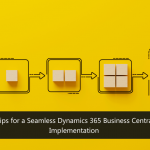
Before the advent of stand-alone, CRM software, businesses relied on a number of non-integrated programs to help them determine their customer’s preferences. Such legacy systems discounted the fact that the “path to purchase” is a complex one filled with “more touch points and more brands” than, perhaps, previously encountered.
Hence, the importance of today’s business processing software, like Microsoft Dynamics 365, to be able to provide decision-makers with predictive analysis. Dynamics 365 implementation must be done right.
Such capabilities, according to Gartner, are key to delivering “predictive and prescriptive analytics.” In fact, Gartner estimates that these processes will account for 40% of an enterprise’s “net new investment” in the area.
Of course, what can an organization do with all of the data companies collect nowadays. Without a bonafide CRM/ERP processing platform, information remains unactionable, thereby discounting customer likes and preferences.
Dynamics 365 provides an integrated look at customer data to better predict the latter’s present and future purchasing patterns.
But, as Forbes notes, “Why is that when customers contact companies, most companies seem completely unaware about anything specific regarding that customer, let alone tastes and preferences. The reason is delinquency when it comes to the aggregation and management of the customer’s data inside the company.”
As companies grow, so does the amount of customer data that needs to be collected, analyzed and acted upon. Too often, notes Forbes, “customer service and sales,” for example, “do not share a CRM.” Furthermore, “… departments operate in silos…(often) people working inside the companies do not even know one another in different departments, let alone use data that spans across the organization.”
Contact us to start this very important conversation about best practices to follow in developing your CRM strategy…and streamlining your business processes, from the shop floor to the accounting office.





